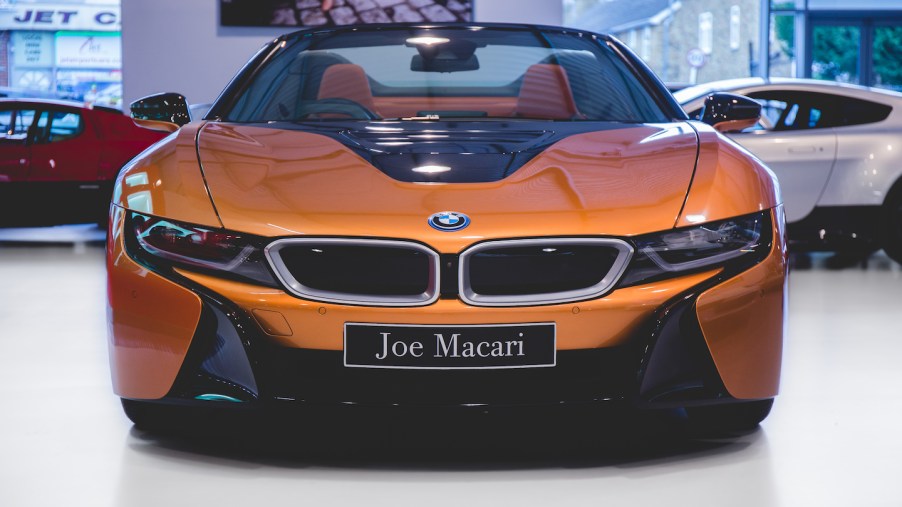
Is a Head-Up Display an Essential Car Feature?
Automobile safety and convenience are among the areas that apply technological innovations. Some manufacturers include features like backup cameras as standard features while some keep costs down in base models and provide advanced technologies as added features. Because technology continues to advance in the automotive industry, a wide range of futuristic trends are the norm, car buyers view certain technologies as essential features.
Head-up displays (HUDs) are among the advanced technologies included in many modern vehicles. While a head-up display is a cool, futuristic feature, it adds to the car’s sticker price. MotorTrend questions whether it is worth the extra cost.
What is a HUD?
An understanding of HUDs is necessary before responding to its importance as an essential feature. Decades old digital technology has all but eliminated the use of analog style dials and gauges on automobile dashboards. A head-up display projects the information displayed on dashboard gauges above the dashboard, which keeps the driver’s head up and focused on the road.
One type of HUD projects information onto the windshield of the car while a second type displays information onto a transparent plastic panel that extends above the dashboard.
Head-up displays improve safety
The idea for head-up display in automobiles evolved from its use in the cockpit of fighter jets where a split second distraction to look down at gauges can be fatal. Though automobiles travel much slower, momentary distractions can also be fatal. When paired with on-board cameras, adaptive cruise control, and other navigational features it prevents the driver from becoming distracted by the gadgets.
Advanced HUD systems use infrared cameras to project lines on the highway, other cars, and road hazards onto the windshield in fog or whiteout conditions, allowing the driver to see what is otherwise invisible for safer navigation. A HUD coupled with adaptive cruise control systems provides guidance to the driver by establishing a safer navigating speed around other autos and hazards.
What are the pros and cons of the different HUDs?
Each of the two types of head-up displays has its advantages and disadvantages. Projection style HUDs display information higher on the windshield and directly in your line of sight. With more space, windshield projection HUDs allow for the presentation of more information. However, there are two downsides to projection style HUDs – they are more expensive and most are difficult to see if you wear polarized glasses when you drive.
In contrast, a display style HUD is less expensive, and components are easier to replace should the system sustain damage. There are no issues related to the use of polarized glasses with this type of HUD. Because they are in a lower position, drivers must look down slightly to view this type of HUD and their limited space means that the driver will have access to less information.
Do drivers need the head-up display feature?
At supersonic speeds, HUD is an essential feature, but the jury is still out when it comes to whether drivers traveling at safe highway speeds need a head-up display as a standard feature. With the majority of navigation and infotainment systems located in a position where the driver’s eyes are still up, though slightly to the side, most drivers are still able to react to road conditions while monitoring data and making adjustments.
However, you have to concede that the capacity to maintain your focus on the road, especially in less than ideal conditions, increases automobile safety.
Head-up displays are becoming more important
As a new tech feature on cars, head-up displays are an excellent feature contributing to both convenience and safety. As a standard feature, a HUD is likely to add to both the sticker price and maintenance cost of your car. Consequently, buyers must balance added cost against added safety to determine whether this is an essential feature.
Although head-up displays are becoming more important, they are a feature that most car makers leave off their standard feature list. For the time being, owners will have to add this feature after market or opt for advanced trim levels that include it.


